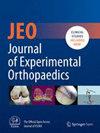To quantify the influence of baseline values of a specific patient-reported outcome measure (PROM) on the minimal clinically important difference (MCID) calculation in a homogeneous series of knee osteoarthritis patients treated with platelet-rich plasma (PRP) injections.
A data set of 312 patients with knee osteoarthritis treated with intra-articular PRP injections was used. Patients were evaluated through the International Knee Documentation Committee (IKDC) subjective score at 6 months after treatment. According to the baseline IKDC score, the study population was stratified into eight clusters in the first phase (<20, 20–29, 30–39, 40–49, 50–59, 60–69, 70–79 and ≥80) and in three macro clusters in the second phase (<40, 40–69 and ≥70). MCID for the IKDC score was calculated through an anchor-based method in both phases.
The MCID calculation was performed for the eight clusters according to the baseline IKDC values, obtaining values from 16.2 to −3.1. Afterwards, further MCID calculation was performed after unifying patients in three major clusters based on the similarity of the previously obtained MCID values. Ninety-six patients reported a baseline IKDC score <40, 173 patients between 40 and 70, and 43 patients ≥70. MCID values for the three macro clusters were: 14.6 for patients with baseline IKDC score <40, 7.2 for patients with values between 40 and 69, while patients with values ≥70 reported an MCID value of −2.8.
This study demonstrated that the baseline patient clinical status influences the improvement needed to be perceived as clinically relevant. Patients with a worse baseline clinical status presented higher MCID levels, while MCID lost significance in patients with high baseline clinical values. These findings warrant applying general thresholds to a patients' cohort, showing the remarkable impact of the baseline clinical status. Patient stratification ensures a proper quantification of MCID values and the identification of patients benefiting from the studied treatment.
Level 4.



